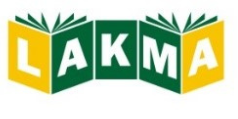John CORBETT joined the University of Macau (China) in 2011 and holds a full professorship there; in 2013 he is a Visiting Professor at the University of Sao Paulo in Brazil. He has published widely on intercultural language education, as well as on Scottish literature and the Scots language, literary translation and corpus linguistics. Among his main publications are Intercultural Language Activities (Cambridge University Press, 2010), An Intercultural Approach to English Language Teaching (Multilingual Matters, 2003) and English in Medical Education: An Intercultural Approach to Teaching Language and Values (Multilingual Matters, 2012). With Andrea del Assenti Rio, he co-chairs the BrazTESOL Intercultural Language Education Special Interest Group. He is vice-president of the Association for Scottish Literary Studies, and he has twice convened the MLA Scottish Literature Discussion Group, helping establish an annual Scottish Writing Exhibition at the MLA convention in the USA. He is also a member of the International Association for Languages and Intercultural Communication and edited the Association’s journal Language and Intercultural Communication for five years (2004-9).
PLENARY TALK
Intercultural Language Education: from Curriculum to Classroom…and Back Again
Over the past 25 years, there has been a steady development in models for intercultural language curricula. The skills, attitudes and knowledge required to be an effective ‘intercultural speaker’ have been codified and embedded in the Common European Framework of Reference for Languages: Learning, Teaching and Assessment. There have also been numerous published case studies of courses that adopt an ‘intercultural approach’ to language teaching, and there is evidence from resource books and language textbooks that ‘intercultural language education’ is beginning to influence mainstream EFL teaching and learning. This plenary reviews the main precepts of the intercultural curriculum and gives some insights into the speaker’s own experience of writing intercultural materials for a practical, mainstream EFL resource book. It also considers what language curriculum developers might learn from teachers’ front-line experience of using intercultural materials in the classroom.
WORKSHOP
How To Be Everywhere at Once: English Is Online Intercultural Exchanges
Increasingly, learners and teachers of English interact through virtual communities via telecollaboration. Classrooms globally are linked together by way of web-based resources such as ‘epals’ and ‘tandem learning.’ Learners from different countries can now exchange opinions and express ideas and attitudes in internet chat rooms, using blogs, or by contributing to film or book review sites. Telecollaboration gives learners a real reason to communicate in English. However, the learning potential of telecollaboration is often not fully realised. The language and conventions of internet chatrooms and websites also need to be learned, and ways of expressing opinions and attitudes change from culture to culture – a fact that can create confusion and misunderstanding. Even the smileys used to indicate emotions change from East to West. Telecollaboration demands intercultural awareness as well as skills in reading and writing. In this workshop, I draw on 10 years of using telecollaboration to link learners in South America, Asia and Europe. The focus of the workshop is on teaching, rehearsing, learning and using the language used to express opinions, attitudes and emotions, and how vocabulary, grammar, punctuation and conventions such as smileys all contribute to the expression of attitudes and help to manage emotions – and relationships – in a virtual environment.

